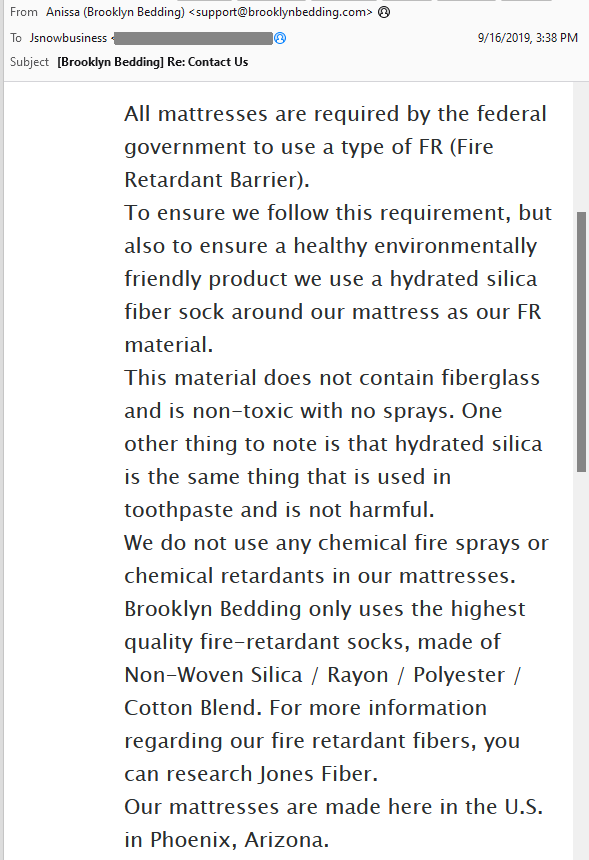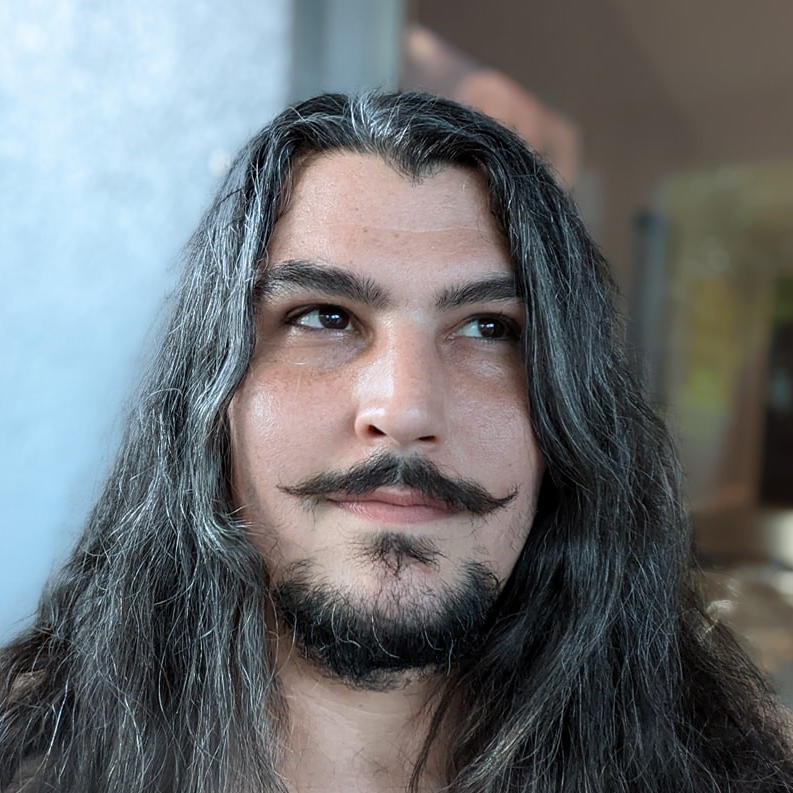Dreamfoam Bedding is a mattress brand under Brooklyn Bedding that sells memory foam and hybrid mattresses, including a highly affordable latex hybrid option. It sells mattresses on its own website, and many of the models are also sold on Amazon.
I decided to look into Dreamfoam Bedding very early on into my journey to find a fiberglass-free mattress for my daughter that started back in 2019. Here’s what I found regarding Dreamfoam Bedding and fiberglass.
Searching Dreamfoam Bedding for Fiberglass
Normally, the first thing I do when investigating a mattress brand’s potential fiberglass use is to check its website. The home page and the FAQ page are usually the best bets, but there wasn’t anything about fiberglass on either of those pages.
However, later on over at the Brooklyn Bedding product page for the Dreamfoam Essential mattress, I found this official Answer to a fiberglass Question.
The questions asks:
“Does this contain fiberglass?” -wayne j.
Dreamfoam Bedding replied with this answer:

“Our mattresses do not contain fiberglass. They are Certi-Pur US certified with low VOC.”
-Brooklyn Bedding
Brookyln Bedding states its mattresses does not contain fiberglass.
I wanted to be sure, though, so I scoured the internet for any reports of fiberglass in Dreamfoam mattresses. I could not find anything on Reddit, social media, the CPSC, or Amazon reviews that seemed to show Dreamfoam using fiberglass mattresses.
Asking Dreamfoam Bedding about Fiberglass
Also, before finding the answered question on the Brooklyn Bedding website, I got in contact with Dreamfoam Bedding via email. Even though I sent the email via Dreamfoam’s contact form, Brooklyn Bedding is still who responded.
This is what I asked Dreamfoam via email:
“Do any of your memory foam mattresses contain fiberglass, modacrylic, or “silica” in the covers or any other part of the mattress? What countries are your memory foam mattresses made in?”
Brooklyn Bedding replied to me very quickly and had this to say about fiberglass:

“All mattresses are required by the federal government to use a type of FR (Fire Retardant Barrier). To ensure we follow this requirement, but also to ensure a healthy environmentally friendly product we use a hydrated silica fiber sock around our mattress as our FR material. This material does not contain fiberglass and is non-toxic with no sprays. One other thing to note is that hydrated silica is the same thing that is used in toothpaste and is not harmful. We do not use any chemical fire sprays or chemical retardants in our mattresses.”
Does Dreamfoam Bedding use Fiberglass
Dreamfoam makes mattresses without the use of fiberglass, its cotton/rayon/polyester flame barriers rely on a hydrated silica treatment to pass flammability tests.
Shop Fiberglass-Free Mattresses
To shop Dreamfoam Bedding mattresses, click the button below!
Last Updated on April 5, 2024

While shopping for his daughter’s first “big girl” bed in 2019, John learned about the hidden dangers of fiberglass in mattresses. Since then, he’s made it his mission to expose as much hidden fiberglass in mattresses as possible. His ultimate goal is federal regulations that ban fiberglass from being used in mattresses, or at least a law that requires it to be listed as a material on required tags.
Hi John,
I came across your website also searching for a mattress for my daughter. I bought a sleepys by sealy foam mattress from mattress firm and the sales person told me they are safety tested with no fiberglass. However, further research indicates that is probably not true. I plan to return. I was looking into dream foam essentials by Brooklyn bedding but after reading a lot of your posts and discussions I’m not clear if the silica in their mattresses is considered safe or not. The FAQ section (although the response is 3 years old) states they use non- woven silica, rayon, polyester, and cotton. I believe your post says they use hydrated silica. Is non-woven silica the same thing as hydrated silica and is hydrated silica considered a safe form of silica or is it the unsafe crystalline form of silica? You stated you looked into this brand early on but sounds like you decided not to go with it, I’m wondering what turned you away. Also, upon looking into sleepys I came across their cocoon line that says they are fiberglass free and instead use rayon and polyester but also says the cover is not meant to be taken off. Wondering if you have any info on that line. Thanks for your help.
Thanks for reaching out!
I did look into Dreamfoam Bedding early on, but I couldn’t get definitive answers back then when I was purchasing a mattress for my daughter. Later on, I was able to get more answers and felt comfortable saying Dreamfoam Bedding was fiberglass-free after more investigation. I also never found any evidence of fiberglass contamination from any Dreamfoam Bedding mattress owners, and some of my family members even own their products!
As for Cocoon, they are made by Sealy. Sealy definitely admitted the use of glass fibers in some of their mattresses. I would avoid the supposedly fiberglass-free Cocoon line just because they may be cross-contaminated with glass fibers from being manufactured by a company that uses glass fibers in some of its other products.
Awesome, thank you. I really appreciate all your info and response. Just to clarify, non- woven silica and hydrated silica are a powder form and are the same thing correct? And that form is the amorphous non harmful form as opposed to the crystalline/harmful/possibly a messy disaster form? I’m just slightly confused about the silica. Basically if I purchase dream foam essentials I want to make sure it’s the safe version of silica that won’t cause issues. Again I appreciate you taking the time to respond and all of your helpful information.